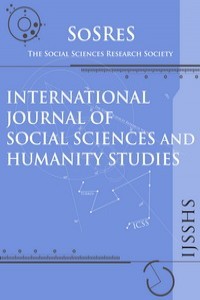TOWARDS SUSTAINABLE ECONOMIC CONVERGENCE: COMPARATIVE ANALYSIS OF MACROECONOMIC SITUATION IN LITHUANIA, NEW AND OLD EURO ZONE COUNTRIES
TOWARDS SUSTAINABLE ECONOMIC CONVERGENCE: COMPARATIVE ANALYSIS OF MACROECONOMIC SITUATION IN LITHUANIA, NEW AND OLD EURO ZONE COUNTRIES
___
- Baltic Sea economies expand again – but to remain competitive, more reforms are needed. Swedbank Baltic Sea Analysis. http://www.swedbank.lt/lt/previews/get/1660/1277884484_2010_06_30_Baltijos_regiono
- _ekonomikos_apzvalga_(anglu_k).pdf [Accessed 12.07.2011]
- Christian Scheinert (2004). Euras. http://www.epp-ed.org/Policies/pkeynotes/docs/lt/46- LT.doc [Accessed 12.07.2011]
- EUROSTAT(2004, 2005, 2006, 2007, 2008, 2009, 2010). Real GDP growth rate. http://epp.eurostat.ec.europa.eu/tgm/table.do?tab=table&init=1&language=en&pcode=tsi eb020&plugin=1 [Accessed 22.07.2011]
- Gitanas Nausėda (2011). Vėl keiksnosime Mastrichto kriterijus? Verslo žinios. http://vz.lt/straipsnis/2011/06/28/GITANAS_NAUSEDA_vel_keiksnosime_Mastrichto_k riterijus2 [Accessed 22.07.2011]
- Januš Levandovsky. Eurokomisaras: Lietuva eurą pasieks nelengvai. http://www.ekonomika.lt/naujiena/eurokomisaras-lietuva-eura-pasieks-nelengvai- html [Accessed 10.07.2011]
- Kristina Montvilaitė, Dovilė Ruplienė (2008). Lietuvos ekonominės konvergencijos tvarumas valstybės finansinės padėties kontekste. Ekonomika ir vadyba: aktualijos ir perspektyvos. 2008 4(13), p. 303 – 312.
- Maris Lauri, Annika Paabut (2010). Estonia - Structural Change to Continue, http://www.consensuseconomics.com/News_and_Articles/Structural_Change_in_Estonia htm [Accessed 22.07.2011]
- Nerijus Mačiulis, Lina Vrubliauskienė 2011. Lithuania: Recession is over - investments key to sustainable recovery. Swedbank Economic Outlook, http://www.swedbank.lt/lt/previews/get/2160/1302167208_Swedbank_Economic_Outloo k_(January_2011).pdf [Accessed 22.07.2011]
- Nerijus Mačiulis, Lina Vrubliauskienė 2011. Lithuania: Growth accelerates and it’s more balanced Swedbank Economic Outlook., http://www.swedbank.lt/lt/previews/get/2315/1302262956_Swedbank_Economic_Outloo k_April_2011.pdf [Accessed 10.07.2011]
- Report from the commission. Convergence report (2010). http://eurlex.europa.eu/Notice.do?mode=dbl&lang=en&ihmlang=en&lng1=en,lt&lng2=b g,cs,da,de,el,en,es,et,fi,fr,hu,it,lt,lv,mt,nl,pl,pt,ro,sk,sl,sv,&val=516272:cs&page= Accessed 22.07.2011]
- Tomas Ganusauskas (2001). Narystės ekonominėje ir pinigų sąjungoje kriterijų vaidmuo
- Lietuvai integruojantis į Europos Sąjungą. http://www.lbank.lt/lt/leidiniai/pinigu_studijos20011/ganusauskas.pdf [Accessed 07.2011]
- Başlangıç: 2009
- Yayıncı: Sosyal Bilimler Araştırmaları Derneği
WAVELET COMOVEMENT ANALYSIS BETWEEN TENDENCY SURVEYS AND ECONOMIC ACTIVITY IN TURKEY
THE DISTRIBUTION OF ELDERLY POPULATION IN TURKEY AND THE FACTORS EFFECTING THIS DISTRIBUTION
MERGER AND ACQUISITION IN THE FINANCIAL SERVICES INDUSTRY
PERSONALITY’ SEGMENTATION ON THE FACEBOOK USER IN THAILAND
Khalaf Taani, Mari'e Hasan Hamed Banykhaled
FOREIGN CAPITAL INVESTMENTS AND ECONOMIC CRISES IN TURKEY
Mustafa ÖZTÜRK, Osman Nuri ARAS
PROFESSIONAL CONTENTMENT IN A RESEARCH UNIVERSITY: A CASE STUDY
Hamidah Abdul Rahman, Maisarah Mohamed Saat, Azizah Rajab
COMPARING MODERNIZATION IN IRAN AND TURKEY
